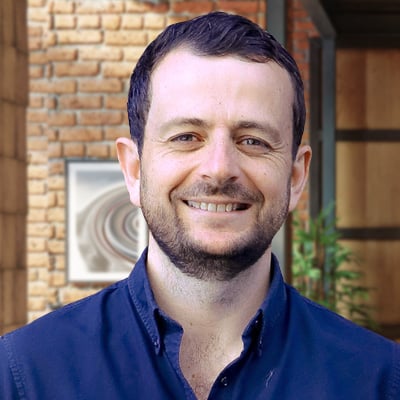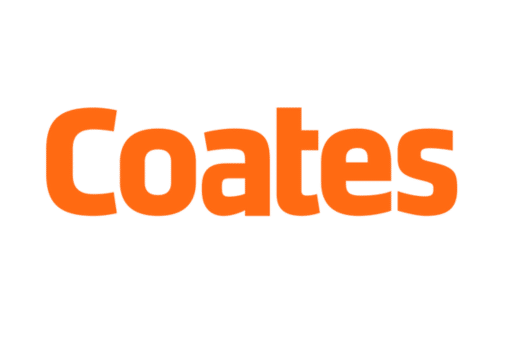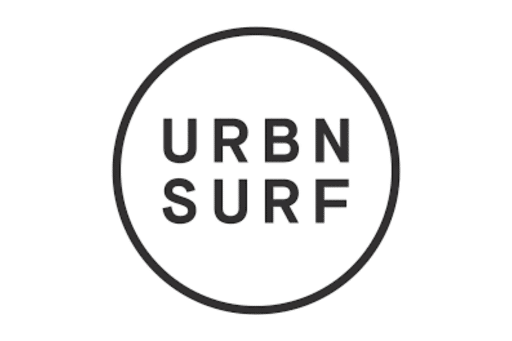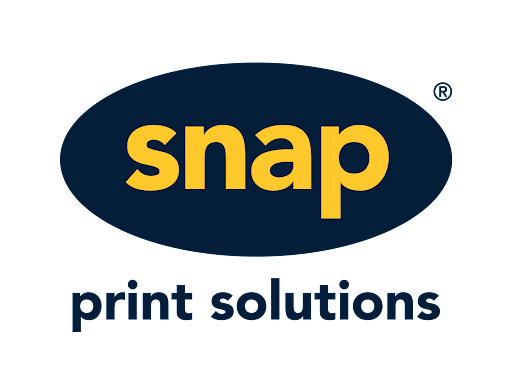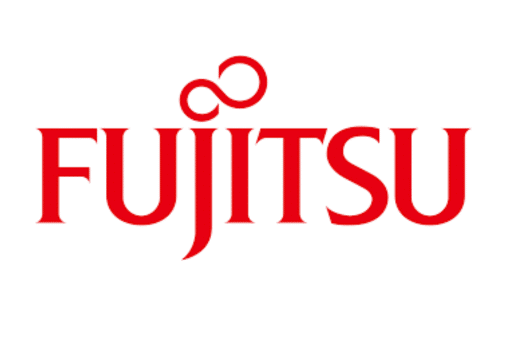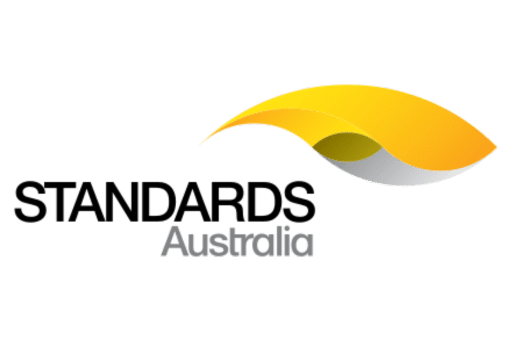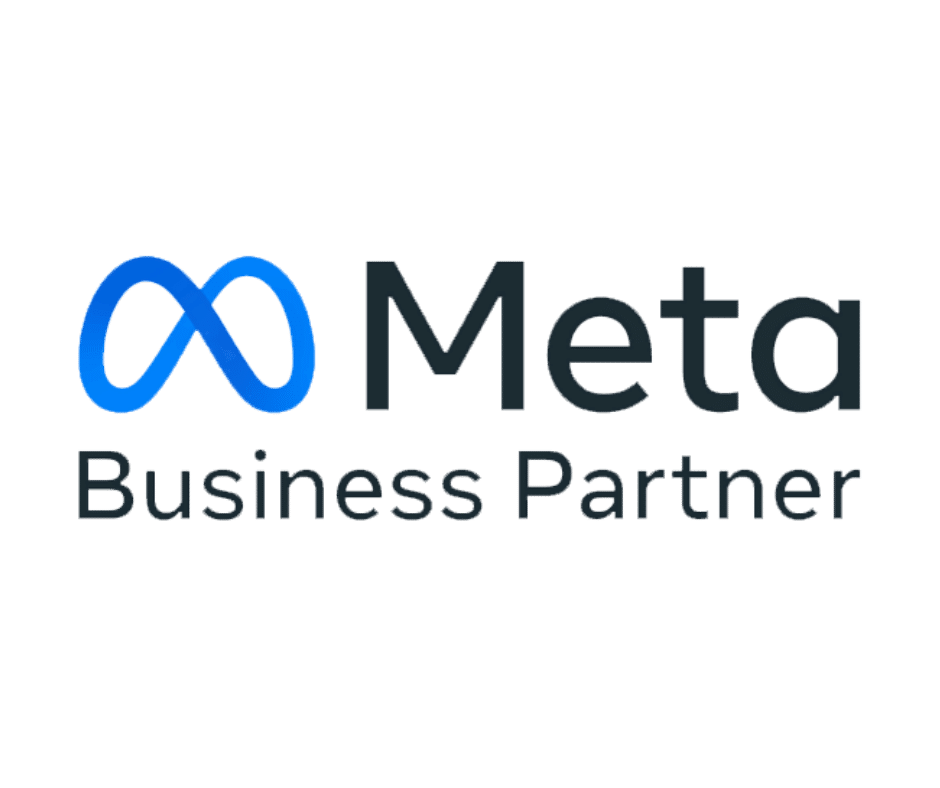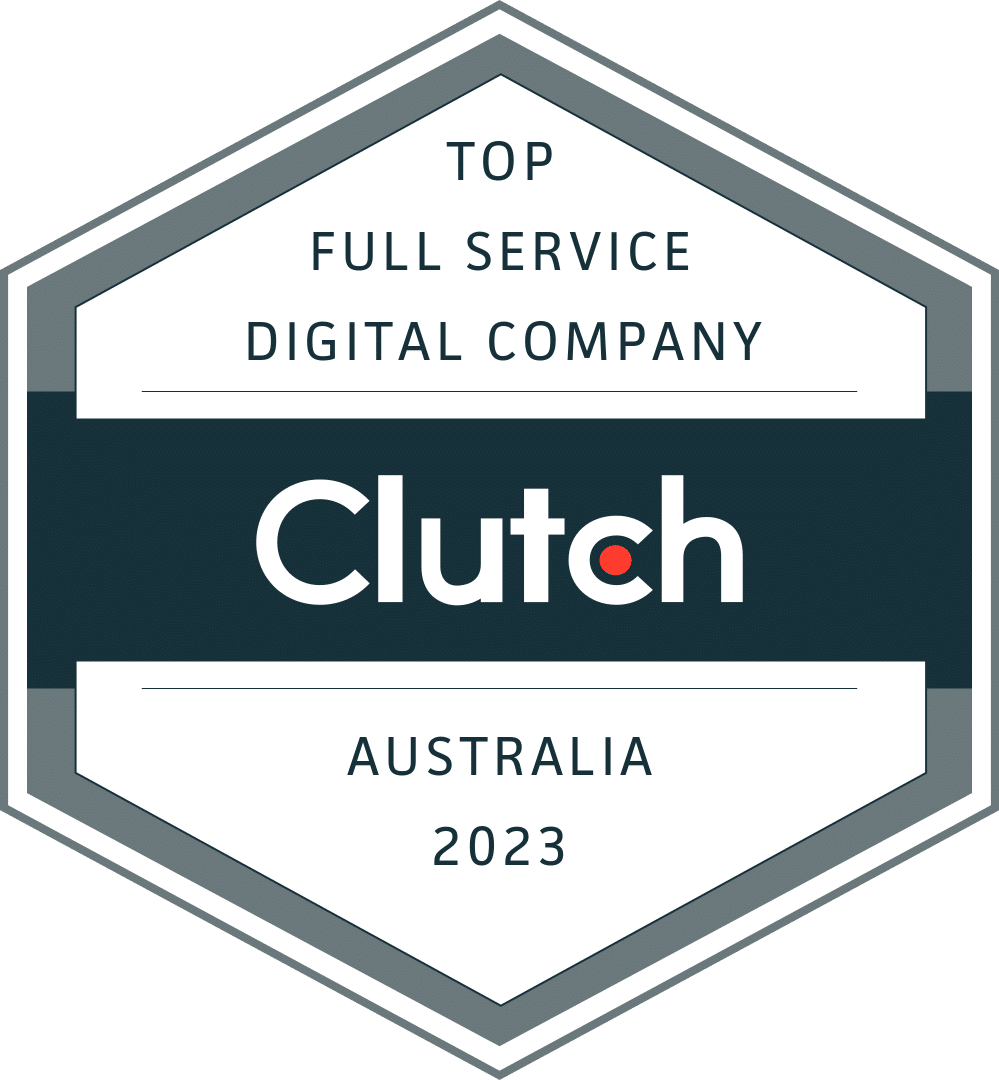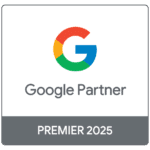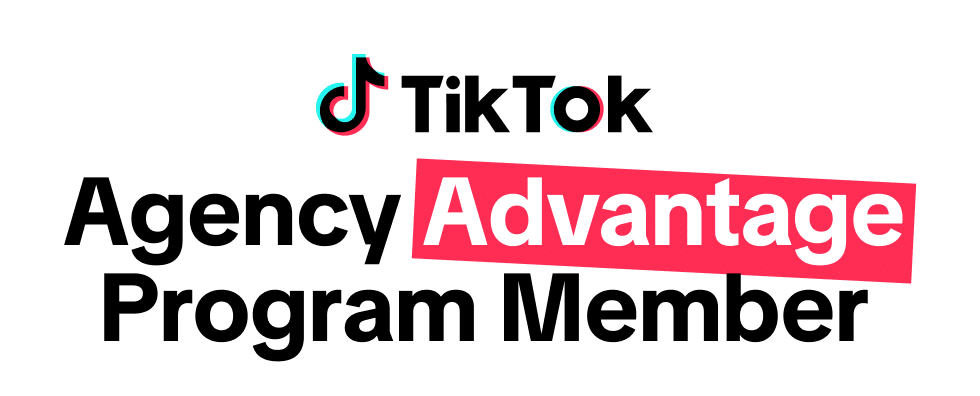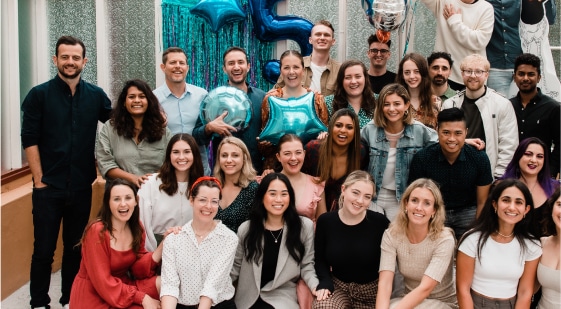State of the Pitch 2025
Episode Description:
Key Takeaways:
- The most common pitch mistakes made by marketers - and how to avoid them
- Why cost-cutting is undermining agency performance and client outcomes
- The real-world impact of involving too many agencies in a pitch
- How AI and automation are being overpromised in the pitch process
- Effective ideas to create a more respectful, effective and sustainable approach to pitching
Featuring:
About the Guest:
Darren Woolley is considered a thought leader on all aspects of marketing management. A Problem Solver, Negotiator, Mentor, Founder & Global CEO of TrinityP3 - Marketing Management Consultant, Industry Commentator, Podcaster, and Author. He is also a Past-Chair of the Australian Marketing Institute, Past President of the Melbourne Advertising and Design Club, Ex-Medical Scientist and Ex-Creative Director.
You can follow him on Instagram [@_trinityp3_] or LinkedIn.
Transcript
James Lawrence: Welcome back to the Smarter Marketer Podcast. I'm here today with Darren Woolley. Darren, great to have you on the pod again.
Darren Woolley: Thanks James. And always good to be here.
James Lawrence: Yeah really looking forward to today's chat. So I'll just, I'll reintroduce you, Darren, for those that don't know of you or haven't listened to our episodes prior.
James Lawrence: So Darren is Founder and CEO of marketing management consulting firm, TrinityP3. TrinityP3 is well known to most marketers in the country working with. Most of the largest advertisers in Australia to help in areas like procurement, advisory, agency selection, as well as working within agency advisory as well.
James Lawrence: Last week, TrinityP3 published its State of the Pitch Report. So today I wanted to have Darren back onto the pod to discuss the report and to get a handle on,, how marketers , can run better pitches and what the state of the pitch is in the country this year. Um. I thought it'd be good for those unfamiliar just to, , talk about what the state of the pitch report is.
Darren Woolley: Yeah. , thanks James. Because, , there's been a lot of discussion, particularly amongst agencies and in the industry about the pitches. Broken, , it's an industry that loves to, , catastrophize things. But, , there was a lot of, , discussion around the pitch, being .
Darren Woolley: Broken, all based on opinion. And so 18 months ago we decided that, , let's not just rely on opinion. Let's go to market and get some honest feedback from the agencies, giving them anonymity so that they can be honest in their, , assessments of. The way pitches are being run. That was, , released last year at this time, the first round, and we've just come back with the results from the second round, which was in the second half of last year, from July to December.
James Lawrence: I don't know if you were taken by surprise, but I'm not. But last year's report being the first one, it kind of seemed to explode, right? In terms of , the traction that it got at, um, all the industry. Press ran lots and lots of content and articles around it. My LinkedIn was taken over.
James Lawrence: With the findings and snippets and comments from yourself and others, why do you think it got such traction?
Darren Woolley: , I think from an agency perspective, many agencies see pitching , and new business as their lifeblood. You know, the growth will come not just from organic growth from existing clients, but also from new clients and.
Darren Woolley: It is an opportunity for an agency to get out there and compare themselves to their competitors in a pitch process. , from a marketer's perspective, there's also interest because, they're often glad handled by agencies and there's not a lot of times where there is honest and forthright feedback.
Darren Woolley: , and while this feedback is not directed at any one particular marketer, it is directed at. Marketing, procurement, and even consultants like ourselves mm-hmm. Say here are the areas where we feel you're underperforming in this process and largely letting us down. . When people talk about it being broken, no one was saying it was dead, because there will always be a need to select new agencies, but what needs to change is the way we go about that.
James Lawrence: , I've got the report in front of me and , it's an awesome. Thoroughly recommend kind of anyone, whether you're on, , client side or agency side to download the report. And we'll put , a link to, , to the report in the podcast notes. But what were the standout findings, , for you in the 2025 edition?
Darren Woolley: , I guess the disappointing thing was that things had got worse. , that many of the things that we identified last time had actually got much worse. But many of those things were particularly around cost. There definitely feels to be a theme running through the response that the focus this year was from marketers and procurement was finding an agency that could do more for less and look in the context of the economy.
Darren Woolley: For the last 12 months, you know, it's not been a booming economy. There's been a huge amount of uncertainty. There's, , been the,, cost of living crisis has continued and deepened and, , I think, , marketers are under pressure to do more for less. So going to pitch was a prime opportunity. What that did was it moved the focus away from perhaps looking for the agency that has everything and looking for very specific.
Darren Woolley: Capabilities , at a good price. And , the implication of that was that many of the other things like ESG or ESR considerations fell down the ladder of priorities. Also there was an increased demand for speed. For instance, you know, that some of the, , delivery times expected of the agencies were shortened, and yet there was an increase in the number of pitches that went over time.
Darren Woolley: So there's quite a lot of, conflicting data in there on one level. But I think what we're seeing is many of the problems we identified in the first report have not improved. If anything, they've got worse under the pressure of , the economic considerations
Darren Woolley: If
James Lawrence: you are working with a client.
James Lawrence: , on the, , marketing side, trying to procure, , agency services. What advice or what perspective are you bringing when, if that is the imperative, which is, you know, we need to do the same thing for 10% less, , or let's go out and find agencies like how are. Working with them to steer , that kind of conversation.
Darren Woolley: Yeah. , we take an approach and we always have, which is that the cost of the agency is a combination of what is it that you require the agency to do, the scope of work, and not just what services, but how many, , to quantify that and really get an understanding of what will be the demands on the agency.
Darren Woolley: And then look at. How that is then serviced number of people required to do that work. The skills , and seniority and expertise of those people. And then the costs associated with it. So when a client says, how can we get an agency to do this for 10% less? There's a couple of ways. One is obviously do 10% less.
Darren Woolley: Work. Mm-hmm. The other is look for agencies that are able to bring increased efficiencies. And there's a lot of promise in the market at the moment around, , automation , and ai particularly gen AI helping in the production area, for instance. Yeah. You know, um, or. To actually then simply look for an agency that is probably less premium because the work you need doing is not necessarily tier one work.
Darren Woolley: Yeah. So there's a number of ways of doing it other than just screwing down the agency on their rates and fees. Yeah. Which is our approach. Having said that, you'll see , , in the document that consultant led pictures and not just us. There's many consultants, is actually a minority. Most of the pictures being run by marketers, then procurement and then consultants.
Darren Woolley: So they're not necessarily taking that approach.
James Lawrence: Yeah, and I've obviously got a bias running an agency, and speaking to other agency owners. Screwing your agency down on margin just doesn't end up getting the best result for clients. And , I'd like to think that most in-house teams, in most in-house marketers would understand that right.
Darren Woolley: You'd hope so, but the agencies themselves do a disservice because , if you are in a competitive tender, how do you know one of your competitors is not willing to put a lower price down on the table as a way of securing the business? I. And that's the other thing. In the last 12 months, I've had more agencies, particularly medium-sized agencies contacting me and asking about new business opportunities because agencies are also under financial pressure.
Darren Woolley: Yeah. Particularly at medium-sized. Now small agencies, we're talking micro businesses. Up to 10, 15 people can easily flex to the changing whim of the market. But once you get to that sort of 20 to 60. People, it's much harder to flex. You have two or three clients cut their spend. Suddenly you're in serious trouble.
Darren Woolley: And so, you know, there is in some ways a desperation in the market, which will drive agencies to try and buy business. Yeah. Because some revenue, even at a theoretical loss on paper is better than none at all. And , there isn't a. Behavior of trying to buy it.
Darren Woolley: Now what does that do? It just makes the client go, well, agency a really good, but they're 20, 30% more expensive than agency B. I'll put some pressure on agency A to match it not realizing that agency B is already providing an unsustainable fee. And when I talk to procurement about it, they go, why would anyone do that?
Darren Woolley: And I go, clearly you've never run your own small business. Yeah. Because desperation will make an owner do all sorts of crazy things in the hope that it'll keep them, that if they keep the doors open, there's hope. And that's, that's the situation.
James Lawrence: A hundred percent. And you see it time and time again. And I think a lot of, , I think it hasn't like it clearly you read the industry press.
James Lawrence: I speak to enough agency owners out there, it's been a tough 18 months, right? I think in-house marketers are struggling with pressure on budgets and pressure on results. , I think agency owners are struggling right? With that effective, um. Budgets being pulled away and media management being pulled away.
James Lawrence: And I think a lot of agency owners will look to take on unprofitable work to mask over your fixed costs and you're delaying making difficult decisions around resourcing , and the like. Do you think the, um, you mentioned kind of ESG and some of those social things being, , less of a focus this year.
James Lawrence: Do you see that as being the classic. Airlines will put the offsetting of, , emissions onto every checkout. And when it comes to the crunch, people won't check the box. , or do you see it as more of macro, , changes in the US political landscape, meaning that a lot of those frameworks are being dismantled and deprioritized?
Darren Woolley: Yeah, , and you have to remember, this was between JU July and December last year. Okay. So we had the US election. , and so I think it's a mixture of both. One, I think it's deprioritized because largely the previous report, it was being driven by procurement, and those levels have dropped by about 50% the number of procurement pitches that have required compliance.
Darren Woolley: And that's the thing is for procurement. These are risk mitigations. They are really checking that the agency is doing something about it. Okay. , so that's decreased the number of, but I think not because necessarily the global political swing away from, , more, , social responsibility, but more the fact that pricing and cost, I.
Darren Woolley: Became more of a focus. So it's almost like we need the best price, irrespective of if they comply with these things. Is more of the mechanism I think we're seeing. However, it will be interesting in the next 12 months to see what happens there because there is definitely, , a major,
Darren Woolley: move away from that, particularly in the US you know, we've seen Accenture song for instance, withdraw from a government pitch in the UK because to comply with a being able to get government work in the US they've dropped most of their DNI, which is what's required to get government work in the uk.
James Lawrence: That's , really interesting. . You had a great line last year, , which was around, marketers are boiling the ocean in search of the right agency, and I think one of , the key lines this year is marketers are still boiling the ocean in order to get to the right agency.
James Lawrence: Can we maybe unpack that dynamic , and what you're seeing,
Darren Woolley: I. So one of the issues that, , makes it incredibly difficult for marketers when they go to market is, where do I get information about what's available in the marketplace? , agencies have a website. They're occasionally on directories, for instance, they will do some promotion for themselves, though agencies are not.
Darren Woolley: Particularly good at promoting themselves. , I always find it interesting, the little exercise of putting Sydney digital agencies into Google and seeing how many paid, , search, uh, results there are for that. But that's not really helping in the selection of an agency. So marketers will often then think about the agencies they've worked with previously.
Darren Woolley: They'll ask colleagues. They'll end up with a long list. They'll end up with a long list of potential agencies, which they'll then take into a pitch. Now it's fine if you start off with a long list, but very quickly filter through those, either through conversations with each agency or have it taking a meeting with them and asking them some questions and get that down to three, maybe four, to then do a deeper dive.
Darren Woolley: But. We're still seeing, , six, eight agencies being taken all the way through the process, and that's a lot of time and effort. That's being invested by those agencies because , the marketers or procurement are unable to filter through it. I think, , this is where a good consultant is constantly making themselves aware of what's available.
Darren Woolley: And that's a job in itself. Mm-hmm. Because, you know, we're looking at thousands. I saw a report the other day in the uk they're talking about over 200,000 agencies in the United Kingdom. That's insane. And 59% are micro businesses of less than three people.
James Lawrence: Yeah. Still a lot. That's a lot of agencies with more than three people, isn't it?
James Lawrence: Exactly. Yeah. , and why does that matter? To a marketer, why does it matter if I drag and as an agency owner, I've got a very strong perspective on this, but why does it matter if I'm dragging 8, 10, 12 agencies through this process?
Darren Woolley: Okay. , there's a logical. Reason. And then there's an emotional, let me give you the logical first.
Darren Woolley: The more choice you give yourself, the more likely you are, particularly if there's a group of you making a decision of making the wrong decision. And the way that works is that if there's more than two of you, so three or more people are choosing an agency and we've got eight different choices, then we're going to end up with the one that's most popular, not necessarily the one that's best.
Darren Woolley: It's just the way that. Choice works when you've got multiple people. , that's the logical reason. The more you can filter down and filter out , the ones that are less appropriate, the better. The emotional reason is, and you'll see it particularly in this report, and I'm not sure whether it's the agencies are more comfortable after the last one, but , the commentary was particularly biting and there was a high level of resentment.
Darren Woolley: And anger aimed at the marketers that showed disrespect that didn't get back to them, that left them hanging for ages. Now, the more agencies you have involved, the more people you're going to piss off when you don't choose them, and the more people you're going to have to phone and have that awkward conversation with.
Darren Woolley: In fact, there's even one quote in there where the person is so angry, they talk about never, ever doing business with those senior people again. Mm. It becomes very personal.
James Lawrence: Mm.
Darren Woolley: You know, it's not like they hate the brand because they know the brand will change. Mm. You know, marketers come and go. But those individuals that treated them with such disrespect, they'll remember and avoid it like the plague.
Darren Woolley: Mm-hmm. And you wouldn't wanna be that marketer, would you? Yeah. That a large group of people , in your industry start to not have any respect for you because they feel you've shown no respect to them.
James Lawrence: Yeah, , and I do feel like sitting on the other side of the fence, if we get an RFP or a tender, um.
James Lawrence: We just feel like we're being, we're there to make up the numbers or whatever it might be. We will ask pretty pointed questions around , how many other agencies are gonna be participating and whatever else. And if it does feel like it's a field of many, we'll often just not be willing to engage.
James Lawrence: And I would suspect that quite often we would be the best placed agency to, to win that work, right? So I'm not even convinced that you're necessarily, sometimes you might be shooting yourself in the foot by putting a process together. Agency. I feel like they're a chance.
Darren Woolley: Well, uh, look, I actually, , think that agencies should do more of what you are doing.
Darren Woolley: Okay. Yeah. We were invited to tender for quite a significant, , government, , contract. And I asked the question, you know, how have you gone about selecting who to invite? Because it wasn't open tender, it was an invitation tender. And they said, oh, we've just collected a large group of, and I said. Look, I'll look at it, but ultimately we declined the opportunity because it was clear that this was just a phishing exercise they were going to market and they wanted a complete RFP response.
Darren Woolley: As part of that, if a client phoned me and said, look, we're not sure we've got a list of half a dozen. What we're gonna do is meet with all of you and then invite three of you to tender. I'd be very open to it. Yeah. But this idea that, well, I've got a big long list. I'm not gonna tell you how many, you've gotta put hours and hours of working to fill in my form.
Darren Woolley: Which doesn't really get to the crux of whether we can do it or not. And then, , I'll choose. I'm not gonna play that Russian roulette. Yeah.
James Lawrence: And we love, we love that touch point. As an agency, I guess if, you know, for marketers listening, just being able to have that. 45 minute, one hour session. It's probably not a full blown chemistry session, but just the chance to ask questions both ways.
James Lawrence: What are you trying to achieve here? Get some background, get relationship right. I think often the best, it is just a chemistry thing, right? Like, do I actually wanna work with these people? Do I like them? And, um, as an agency owner, I'm so happy to invest that time with a couple of members of the team and myself.
James Lawrence: , is this gonna be a fit? , and I think often when you're held at arm's length and you do feel it's this. Process with lots of agencies, you also don't get the information you need in order to properly respond. So I think you also end up coming back with a pretty half-baked, , response to whatever , the tender might be.
Darren Woolley: Well, the other thing, James, is when you do ask a question and then you find out they've shared your questions with all the other tenderers and you're like. Did they even think of asking that question? Yeah. And are you just leveling the playing field to the point where no one can demonstrate an advantage because you're treating everyone as if they're the same?
Darren Woolley: You know, a lot of what agencies bring to the relationship is their intellectual curiosity , and knowledge. In asking questions, particularly ones that go to, you know, strategy and insight sharing that is just ridiculous. And yet procurement do it as a
James Lawrence: routine. , couldn't agree more. You mentioned, , some of , the quotes, , which are on the first page of the, of the, um.
James Lawrence: Of the report and , it, it was the, there's some great quotes there, right? Pictures have become, a total lottery. You just hope that what you present resonates. We've had enough feedback this year. The work was too sophisticated, wasn't sophisticated enough, the market, and we're suspicious. The result was predetermined.
James Lawrence: The pictures are fast. I. The client took a long time to issue the brief, resulting in very little time after to answer it. Agencies were given a presentation slot of 40 minutes and back to back time slots for six agencies on the same day. Feedback was only provided when asked for, and the award was based on cost, not quality of work.
James Lawrence: I think , it's such a good opportunity. Because there is, a divide, right? And I totally get the challenges , that marketers also are having in house. Right. And the pressures on them. Yeah. But I think it's such a good report in terms of bringing together two perspectives, that are often quite opposing.
James Lawrence: Um, but we're trying to achieve the same thing in many instances.
Darren Woolley: And look, these are verbatim. The only thing if there's any editing, it's because occasionally they'll actually name someone and we don't wanna get into , a shouting match about who did what. So, you know, there is, a little bit of editing to protect the guilty or the accused, let's say, to the accused.
James Lawrence: Um, so what, I guess in terms of the nuts and bolts of the report, , are agencies pitching better in 2025? , are clients managing the pitch process more effectively?
Darren Woolley: So timing wise, it's interesting, you know, and , I touched on this a minute ago, but the amount of time given to agencies has tightened, , it would be often three to four weeks.
Darren Woolley: It's now two weeks, or, yeah, one to two weeks. Which is interesting, , because sometimes agencies like. To keep things moving and have momentum, but then the other thing that's happened is the overall time of the pitch is being more inclined to drag on beyond the expected end date. So we've got two mechanisms here.
Darren Woolley: One is marketers are asking the agencies to respond faster . Then the marketers themselves are often taking longer, and that touches on another point that came out in this report that we didn't have previously, and that is there seems to be an increased involvement of senior management. At a local level or global management for regional and global pitches.
Darren Woolley: Mm-hmm. They're getting involved in the pitch, not upfront, but during the pitch process, which is causing the marketers to then have to pause the pitch while they get the, , senior management up to speed , and then listen to any concerns they have and then go back into the pitch process. Now, I think any agency would love the idea of a CEO.
Darren Woolley: Being involved in the selection process, but you would hope that they're involved in having input from day one and not getting involved halfway through and completely. , upsetting the cart.
James Lawrence: Mm. I was actually listening to, , your podcast this morning, Darren, to the Trinity P three podcast on my drive to work , as I sometimes do, and it was, you weren't hosting it, but your colleague was , on market mix modeling and , I forget his name, but the, one of the co-founders, Andex.
James Lawrence: Yeah. He was talking about this, . Increased speed that is put on marketing teams, kind of, that has increased over, over recent years. And I can't help but think that a lot of it, you know, we are dealing with difficult economic times. We're dealing with a lot of uncertainty. So I can imagine that the pressure, the microscope, more senior stakeholders, people from different parts of organizations.
James Lawrence: Wanting to be involved in these decisions and, , it's the expenditure related to, but then when things are uncertain, I think we, we delay decisions and we don't wanna make the wrong decision. And I can't imagine those two forces are at play , for those two, , changes in turnaround time or pitches.
James Lawrence: Would you agree with that?
Darren Woolley: Yeah, absolutely. , I think the other thing is, , and we're all aware of this technology is driving speed. And when the economy's tough, you're more inclined to move to performance focused where you, you know, going for sales, , or leads rather than building brand.
Darren Woolley: , the long and the short of it gets outta balance because the economic imperative to drive revenue to support getting a budget next year Yeah. Becomes the overrid driver agencies. And this is not in the report, but is of concern to us because the talk about automation and AI speeding up the process and making it cheaper.
Darren Woolley: So the idea that it can be cheaper and faster at the same time, I. Is appealing, obviously, to marketers in procurement because it's about doing things faster, but also saving money. And I'm concerned because what it doesn't allow for is the significant investment in time and money an agency needs to undertake.
Darren Woolley: Make that work. , this is not as simple as just getting a subscription to an open AI chat bot. There's actually processes that need to change. There's security that has be checked. There's, uh, intellectual property. There's a whole lot of issues that have to be dealt with before an agency's even close to being able to deliver the benefits and then add a significant financial investment that the agency would then need to recoup.
Darren Woolley: Whether it's an independent or a network agency, you know, the networks have come out, sprouting figures, like $300 million plus on a global basis. , it can be as significant for an independent agency in one market. , it could be in the hundreds of thousands of dollars to, , in time and co and out-of-pocket costs to achieve the same type of thing, which is money that has to be recouped.
Darren Woolley: Yeah. So I'm concerned that the focus on time and money. Is being done on the basis that the supplier will just find a way to meet it, rather than the marketers entering into a conversation or procurement entering into a conversation on how can this be delivered in a sustainable way? Because ultimately, , if it's not sustainable, everyone's gonna be disappointed.
Darren Woolley: And we're already hearing from the market of clients that have bought the dream only to be disappointed because the reality was quite different.
James Lawrence: And how much of it is being driven by. Marketers, procurement, reading the buzz, dealing with AI in their own personal and professional lives, therefore going to agencies and saying, you should be able to do this in, you know, 20% less time or half the less time.
James Lawrence: Or how much of it is being driven by agencies coming in and selling the dream of efficiency and ai? Yeah, it's, it's,
Darren Woolley: the agencies largely driving it. , marketers are definitely interested. But they also, most of 'em are aware that it comes with , issues. Risk issues. So it's the agencies, , as an industry we've always jumped on the shiny new thing, , as a way of giving us some sort of differentiation.
Darren Woolley: Just look at the number of consultants that have sprung up in the last two years around helping agencies embrace and marketing teams embrace ai. , it's a new growth area because it is new. Yeah. I'm not seeing enough of the industry conversation or even the agency to client conversation.
Darren Woolley: 'cause agencies will often, in the same way as they'll discount fees to win, they'll make promises and we saw it. I think the last great one was the dashboard. Do you remember when every agency would offer their client a dashboard? And it would be at no cost free to you and we'll be ready in months and after appointment 12 months later, there was still no dashboard and there was talk of a hundred thousand dollars fee to set one up.
Darren Woolley: Yeah, right. It's the same type of behavior. I think we need to be, I. Apply some maturity to this , and talk about, yes, it can be done. Here's what's involved, here's the costs involved. We need to recoup those. And then it's not just a set and forget, there's an ongoing, , need to update, pay, licensing fees, build, , technology as it improves.
James Lawrence: And I do feel that there's this, vulnerability where if as an agency or an agency owner or you're working in an agency, if you don't come in with, yeah, we're using AI for all these things and it's changed everything that , you're missing the boat a little bit.
James Lawrence: 'cause we all sit there on LinkedIn and the last week has been all about how we can now just create ads with the, with a simple prompt and the, the push of a button. Yes. But I don't know, like our copy teams have grown. Massively since the popularization of chat. Bt um, yes. Every single member of our team are using AI in different ways, but the team's busier than ever.
James Lawrence: They're very powerful tools, which essentially are efficiency tools, but that which all have access to the same tech in most instances. And it just means the bar's increased. Right. And what we use our time for then absolutely different. It's, um,
Darren Woolley: yeah, it is symptomatic though. These situation agencies find themselves , in trying to differentiate themselves by embracing the latest technology, the latest fad.
Darren Woolley: And I use fad, not because it is a fad, it's, it's gonna make fundamental changes to the way we do business. But this early on, , we're still at the infancy stage. You know. Yeah. It takes, , and we're trying to change a process that has been very human centric for, , decades into one that's more automated.
Darren Woolley: It's gonna take time.
Darren Woolley: Yeah. That's it. And I think , the future promise is clearly there and there's lots of work that can still be done, but I think the gap between the two , is larger than I think people , like to admit. What was the, biggest surprise out of this report compared to last year?
Look, the surprise was there wasn't improvement anywhere. And that's sad. You know, I feel like same but worse is not the news that I was hoping it would be.
James Lawrence: , I've got a quote here from you in the industry press. Um, this is more pessimistic and nothing worth celebrating Exactly. That Darren will eat Trinity death. Right?
Darren Woolley: Well, because you would think with so much focus on pitching, but the trouble is the, the people that are suffering. Mostly are the agencies and they're not empowered to actually change the marketers.
Darren Woolley: The change is going to come from marketers. When marketers start to want to do pitching in a better way, that has less negative impacts on their agencies when they want to start customizing their pitch. To what they're actually doing. I mean, we're still seeing, even in this report, , pictures for between 102 hundred and 50,000 in fees, going to a full creative pitch with full , speculative creative work done.
Darren Woolley: Now that's just ridiculous. , there is no way. An agency can recoup the cost of participating in that pitch in the first year.
James Lawrence: Yeah.
Darren Woolley: Right. So you're working for nothing for the first year, and yet there are so many ways that you could do a pitch, you know, and , for a small project like that. First of all, meet again.
Darren Woolley: Make a short list, meet with the agencies, get them to present a couple of case studies in that meeting of similar work that they've done for other clients, and then get some references from some of their clients and have a very honest conversation with those marketers around what it's like to work with those agencies.
Darren Woolley: It has very little impact. You largely know your budget, so you can then share that with the agency and ask them what could they achieve for that sort of budget. As an indicative so that you see what the value would be and that's all done. It could be done in three or four weeks. No major out-of-pocket costs for the agency, apart from some time.
Darren Woolley: Yeah. But, , has all of the due diligence and governance that a full creative pitch does. 'cause the problem with, , speculative creative and I, I had this conversation only in the last couple of weeks with a client. They said, oh, we, we, you know, said to them, we don't want the agencies to do any creative work.
Darren Woolley: And they said, well, how will we know if they can do it? And I said, how do you know now? Just because they're presenting the work doesn't mean it's theirs. Many agencies use the large body of freelancers to do creative work. It may not be done by the agency. How do you know they developed the strategy first and then did the creative?
Darren Woolley: This is not a great way to test an agency. It's a great way to buy an idea , if all you're buying is that idea, but it's not a great way to actually test if an agency has the strategic creative ability. To come up with lots of ideas over the next two or three years.
James Lawrence: Yeah, that's it. , I'm not convinced that, , marketers will be across the dynamics necessarily, but the, I think you put in there that the average profit margin of a well run agency will be 15%.
James Lawrence: . And , if the total of the project is, , a hundred to 250 K, you're kinda looking at, , $15,000 to Yeah. , 30, 40 grand profit. That agency will make from that project. And then if you unpack the cost of the cost for the pitch, and if you multiply it out six times for six different agencies, , the money being lost by the agency world over that.
James Lawrence: Um, and I don't, but
Darren Woolley: why do agencies do it, James?
James Lawrence: Well, we try really hard not to, right? We, try really hard to ascertain. , what's behind the pitch? Is it already predetermined? What's happening with the incumbent? Is it work we actually want? Are these the types of people we wanna work with?
James Lawrence: We're so happy to. , and I think that we're probably a little bit more, not fortunate 'cause I think we work hard on it, but I think we often have, , more opportunities for work than we can practically deliver. So we are, we do have a bit more control over saying, no, we're not interested. But , I think your point before is right, if I'm running a 30 person agency and I've just lost my two biggest accounts, and then someone comes in with a shiny RFP for, , a quarter of a million bucks worth of work or a million bucks worth of work.
James Lawrence: What am I gonna do? Am I gonna throw the kitchen sink at it or am I gonna politely decline? Like , it's hard, right? I think , a lot of it's based on, , the agency and how much, I guess, strength they have and courage and how their bottom line's looking and what the budget looks like.
Darren Woolley: Yeah.
Darren Woolley: There was one of those quotes, , a repeated comment from big global brands thought we'd just see what's out there. Right? I mean, this is an incredibly expensive way. To go and find out , what's out there. Yeah. , there are so many other ways to do that. Yeah. And so, , it's almost negligent to actually go to market, invite a whole lot of agencies to come and present and participate in RFP, just to find out , what's out there.
James Lawrence: Yeah. And I think it depends. I think if you are getting to contracts that are 1 million to 10 million bucks and the pitch team , has tens of hours of work to put into a piece of creative, this might be different. But I would argue that the idea of going out to multiple agencies for some work that's a hundred to half a million bucks and saying, pitch some ideas at us, I'd argue that those ideas themselves, they're not worth it.
James Lawrence: They're not worth it. Right. They're not gonna be the best ideas that team would actually deliver if they had. You know, the certainty of the full budget and the full allocation of hours. , so I think you're actually potent. And , the candidates that are excellent , at job interviews, but not necessarily great once they start work, it's the same thing, right?
James Lawrence: You're gonna get an agency to your point that might pull in a freelancer, put something pretty shiny together, or, um, you know, if you're gonna engage six agencies, one of them might just put together something you like, but is that agency necessarily the best one? To deliver longer term? Probably not.
James Lawrence: Right?
Darren Woolley: Well, you know, one of the things that we do is we often organize workshops. Where the marketing team and each agency individually gets to work with the client. And, you know, when we introduced those almost two decades ago, the marketing team thought it was terrific because it was as close to a test drive as you could get.
Darren Woolley: It took it away from being a presentation to working together mm-hmm. In a workshop for, you know, four hours or seven hours or whatever the length of the workshop was. Interestingly, the agencies loved it as well because they got to test drive the client. Yeah. They got to see which were the good clients, you know, which were the good thinkers, who was open to new ideas, who was more cautious.
Darren Woolley: And so for both parties, this idea of getting to test drive each other was incredibly valuable. Now, it's only worthwhile if the size of the prize. Justify spending a day in a workshop and the prep work that you need to do it. But in many ways, an agency will spend less time doing that than they will developing a whole creative response, because it's often done in isolation and agencies will spend a lot of time Yeah.
Darren Woolley: Second thinking , and. Questioning themselves on what they should be presenting. Yeah. A hundred in a workshop, you're just getting instant feedback.
James Lawrence: Yeah, and I think the other thing about that approach is much harder to fake, right? Oh yeah. I think, I think , sitting on my side, and easy is not the right word, but the idea of putting together a nice, shiny.
James Lawrence: Deck that you then, you know, sit with your, the people in your agency that communicate the best and can talk to and whatever else, and sell in the value, versus actually having the team members that are gonna be on the tools and they're gonna be client facing, sitting in a room, answering questions on the fly.
James Lawrence: I think if I was looking to purchase, I know which approach I'd rather rely on to give me a good idea of what it's actually gonna be like to work with , this agency. .
Darren Woolley: Marketers say they want that. , they say we don't want the A team to present to us, and yet they'll often want to defer to a presentation.
Darren Woolley: Mm. You know, because it does take a level of maturity to be willing to put your team. I. And you know, an extended team into a room with an agency where the agency will be asking questions of you. And in fact, I remember very early on before this became our sort of more regular way of running a pitch one agency who was very good at presenting, we had a full day, seven hour.
Darren Woolley: Uh, workshop. The first three hours they presented beautifully. There was a lunch break, and then they did, they came up to us and said, so what do we do now? And we go, it's a workshop. What would you do? We've never done a workshop before. And I go, come on. You know? So yeah. You stop getting the 18 because Yeah, it, to your point, you can present for two or three hours.
James Lawrence: Yeah. You can't fake a full day. Yeah. Problem solving, digging into what you've done for other clients, and I love it. , What's the one change that you would love to see in the 2026 report?
Darren Woolley: , I'd like, , clients to be more respectful with their soft skills. I would love them to improve the level of open communication, both at the start of the process, right through the process and at the end.
Darren Woolley: I think the thing that, , really irks, upsets, infuriates agencies is being ghosted or feeling like they're being ghosted, you know? And, and let's use this as a a, the metaphor is I invite you to a party. And you accept and you come along. And then the whole night, every time you talk to me, I just turn my back and walk away and ignore you.
Darren Woolley: And that's how they feel. And then suddenly you realize the party's over, but no one even said goodbye to you.
James Lawrence: Treating me mean to keep me keen, Darren, I'd come back to the party the next weekend.
Darren Woolley: Well, but that's what it's, you know, when you think about it, inviting an agency to participate, then not responding or responding in the coldest way possible, mechanical way possible.
Darren Woolley: Yeah. And then providing no feedback or no, , direction other than do this, do that. Yeah. And then at the very end, making a decision to end the. In the process and not even tell the agency why it's ended or what they could have done better. For next time. It's just rude. And , I've made it very stark there.
Darren Woolley: , I'll acknowledge that, but that's how the agencies feel. And out of that, you start getting, , agencies believing, oh, it was all a setup anyway. It was rigged such and such new, , in the vacuum of knowledge and information you've created the agency, start filling it with the sorts of.
Darren Woolley: Rumors , , and ideas that are incredibly damaging to your professional reputation. So I'd like to see that improved and stop doing it.
Darren Woolley: Taking responsibility for the process that you instigated.
James Lawrence: Yeah, it's a , great answer. , and don't tell us we came second. Give us, just give us actual feedback on what you liked about us, what you and I think humans struggle with giving direct feedback, right.
James Lawrence: I think people. Generally don't like to let people down, but I think it's that gap that does create all of , the murmurings and the negativity, right? Which is, if you actually just give me good, constructive feedback on where we're awesome. , where in your eyes we weren't a good fit.
James Lawrence: It helps you the next time. Right?
Darren Woolley: Yeah. Well, we use radical candor. The first step of radical candor is to get permission from the person to give them feedback. Yep. And then be respectful, but bluntly honest, so that there is no confusion. You know, the problem is sugarcoating. It will often then lead to more confusion and doesn't come across as being authentic, which then makes the other person think they're hiding something.
Darren Woolley: , I think there was a quote in there this time, which is the agency told that they were close second, and then they checked with the other two agencies on the pitch, and they were both , close second because the client hadn't appointed anyone. , I did read that and that had a chuckle, so stop doing it.
Darren Woolley: Please, mark Iters, stop doing it
James Lawrence: now. Darren, we're close to wrapping up the conversation and what I wanted , to pilot today with yourself was a lightning round. Okay. So I've got my buzzer. I like this. Is, this is, , a new format , for the show. One word to describe the pitch process in 2025.
James Lawrence: The worst pitch practice still happening today. Too many agencies. The best pitch you've ever seen and what made it great. You don't necessarily have to mention , any brand if you don't wish to, but,
Darren Woolley: , a very focused marketing team who didn't wanna waste their time and therefore didn't wanna waste the agency's time.
Darren Woolley: So we got it done very quickly.
James Lawrence: I like that. And this doesn't have to relate to the pitch process. What's the one best piece of marketing advice that you'd give to an in-house marketer?
Darren Woolley: , always be very clear of what success looks like for you and the timeline you want it delivered by. No matter what you're doing.
Darren Woolley: Always know what you want.
James Lawrence: Darren Willie, thanks for coming back onto the podcast.
Darren Woolley: My pleasure. Thanks James.
